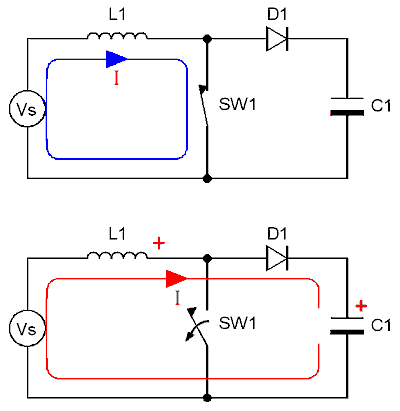Quote:
Originally Posted by MPaulHolmes

I think freeway battery amps at 144v are around 60-70amp for a DC controller, for constant cruising. I'm not sure about that, but I've heard that thrown around.
|
Cool, how much will they peak? I heard 15KW is enough to 60MPH cruizing in a straight line, but I am curious how much acceleration they can have.
I can only tackle very step hills at 24-28MPH, with a continuous current of about 45Amps. More would overheat the motor, unless it's just required for acceleration during a few seconds, for example, after a stop. This is the good thing about voltage - reduce one gear and use the extra HP at higher voltage and less current!
Quote:
Originally Posted by MPaulHolmes

Oh I hope you are right. I just don't understand it though. I mean, if I have an inductor in series with the the battery bank B+, current out of the battery is the same as the current through the inductor, right?
|
When the freewheeling diode is active, current is the same as the output. 200Amps. The inductor current sums with the battery voltage to provide the output.
When the switch is active the diode is reverse biased and the current flows trough the inductor instead, with the load being supplied by the capacitors.
So you have a constant output from the battery. 50% of the time it feeds the load in series with the inductor, while the remaining 50% is charging the inductor by building its magnetic field.
Notice on post 1525 the output current is just slightly less than the peak inductor current, not twice. This has to do with the dead time between charge and discharge.
If we want to be really scientific, yes for a 50% duty cycle and an output of 200Amps one has to transfer 400A during half the time. But the average continuous current is still 200A. In fact 200Amps AC.

Bottom end: This works similarly to a flying capacitor setup.
The inductor is providing half of the output and therefore only half the voltage, at the same amperage as the output. The output voltage comes from the sum of the voltages from both the battery and inductor, but since the battery is feeding both the load and the inductor its effective output is twice the output amperage. Energy conservation law
